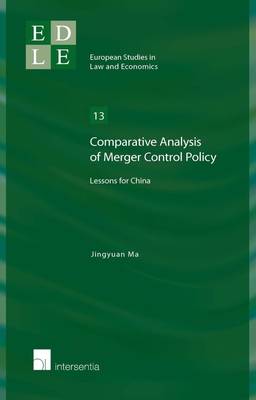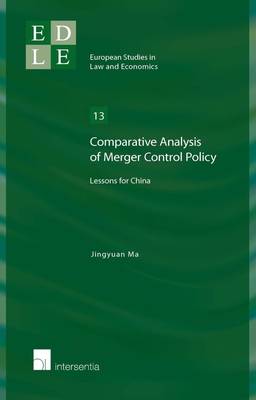
En raison d'une grêve chez bpost, votre commande pourrait être retardée. Vous avez besoin d’un livre rapidement ? Nos magasins vous accueillent à bras ouverts !
- Retrait gratuit dans votre magasin Club
- 7.000.000 titres dans notre catalogue
- Payer en toute sécurité
- Toujours un magasin près de chez vous
En raison de la grêve chez bpost, votre commande pourrait être retardée. Vous avez besoin d’un livre rapidement ? Nos magasins vous accueillent à bras ouverts !
- Retrait gratuit dans votre magasin Club
- 7.000.0000 titres dans notre catalogue
- Payer en toute sécurité
- Toujours un magasin près de chez vous
93,95 €
+ 187 points
Description
After thirteen years of discussion, the Anti-Monopoly Law of the People's Republic of China was promulgated on 30 August 2007 and entered into force in August 2008. During the legislative process, a particular challenge was to determine the goal of competition law in China. This challenge can be best illustrated by the merger control policy under the Chinese Anti-Monopoly Law, which has been formulated by taking into account economic goals as well as various social and political considerations.
Comparative Analysis of Merger Control Policy investigates to what extent competition goals may influence merger policy by taking a comparative perspective. To address this central research question, this book focuses on four major issues. First, in order to understand why competition law and policy in China incorporates a multitude of policy goals, the legislative history of the Anti-Monopoly Law and merger policy in China will be explored. Second, the evolution of the debate on competition goals in the US and the EU will put the developments in China in a comparative perspective. Third, emphasis will be placed on the evolution of incorporating the efficiency goal into merger policy. Finally, given the theoretical debate on competition goals, it must also be discussed whether competition goals may have an impact on the analysis of merger cases. Taking economic theories and modern economic techniques as the benchmark, this book concludes that the divergent competition goals in China, the United States and the European Union lead to a different outcome of merger cases. This book not only provides a comprehensive overview of the debate on competition goals, but also conducts a discussion of the impact of competition goals on merger cases by taking a comparative view. It also sets out policy implications for competition policy makers in China.Spécifications
Parties prenantes
- Auteur(s) :
- Editeur:
Contenu
- Nombre de pages :
- 272
- Langue:
- Anglais
- Collection :
- Tome:
- n° 13
Caractéristiques
- EAN:
- 9781780682457
- Date de parution :
- 10-08-14
- Format:
- Livre broché
- Format numérique:
- Trade paperback (VS)
- Dimensions :
- 160 mm x 240 mm
- Poids :
- 467 g

Les avis
Nous publions uniquement les avis qui respectent les conditions requises. Consultez nos conditions pour les avis.






